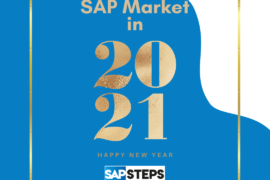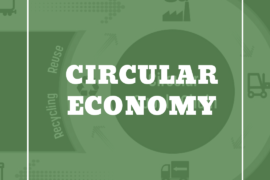Introduction
One of the most frequent daily needs of any company is reporting.
Reports are important both for the day-to-day, as well as for consultants who participate in implementation or improvement projects.
For me, SAP reports have always been a cause for concern, as we have so many options available that it made me “lost” at various times when I needed a specific report.
This post is starting a series of posts on reports.
In today’s post, we will list the main reports within the MM module regarding inventory.
In the next posts, we will detail other reports.
A Useful Transaction (TCODE)
To start, I want to talk about a very useful transaction within SAP to find reports.
The transaction is called: MC01
Through this transaction, it is possible to access several reports within SAP regarding different logistic modules (MM, SD, WM, PP, QM and PM):

When we access the “Purchasing” tab, we are faced with the following options:

Here, you can start “playing” and look report by report.

Reports SAP MM-IM (by TCODE)
MB24
Report where you can view all the reservations created for a given material/plant in the system.
MB51
A report showing all material documents for a given combination of fields. This is one of the most used reports by the logistics teams, mainly because it offers numerous filters and very detailed information.

MB52
Report that shows the available stock both in quantity and in value for a given combination of parameters.
It is also an excellent report and widely used in all companies:

Note that in addition to being able to perform filters by type of material, material group, special stock, you can see quantity and value at the lot level! It is very useful!
MB53
Report that shows the amount of stock available at a given plant. This report shows only the total amount of stock for a given plant, material, and batch that is available (Unrestricted).

MB54
This report shows the stock that is on consignment, that is, it is a material that is associated with a supplier (that is why we have the Vendor field available in the filters), but it is in our physical stock.

MB58
This report is intended to list the materials or packaging that are owned by us but are on a customer. (Consignment Process)

MB59
Report that also generates material documents.
In my view, it has the same functionality as the MB51. (including both transactions call the same program within SAP – RM07DOCS

MB5B
It is a very interesting report that shows us the stock situation (Quantity) in a given period.
As a result of this report, you will be able to see:
- Stock quantity and value on the start date (filled in by you).
- Total and value of all Goods Receipts.
- Total and value of all Goods Issues.
- Stock quantity and value at the end date (filled in by you).
- Material documents for the period.
You may be asking yourself, is it not the same as the report generated by MB51?
The answer is no.
Let’s look at an example.
For a given material, I will enter the MB51 and set the following parameters:

The result will be as follows:

Simply a list of all movements, material documents and quantities.
Now, let’s use transaction MB5B:

We will have the following result:

Great, isn’t it?
MB5L
This is a great transaction to find errors in accounting entries in inventory accounts. When we use this report, it checks for differences in value between the inventory and the inventory account.
If differences are found, one of the situations likely occurred:
- Manual postings were made to the stock account
- There is some configuration regarding the wrong accounting.
- Some change was made to the accounting configuration during an operation in progress.

P.S: This transaction is widely used by the accounting team.
MB5S
Report that compares the quantities and values between the goods receipts (MIGO-GR) and the invoice receipts (MIRO) of a purchasing process. It is a comparison report between GR (Goods Receipt) and IR (Invoice Receipt).
Very useful.

MB5W
A report showing inventory values and quantities by plant level and storage location. Also, the stock account is shown.
You can use this report by consolidating all materials or individually (material by material).

MBGR
This report is not well known, but it can be very interesting, mainly to quantify material movements where the field “Reason for Movement” is used.
For example, when a defective material is purchased and we have to return it to the supplier, it is quite common to use the “Reason for Movement” field to indicate the reason for the return.
With the help of this report, we can list all returns made by “Damaged Material”, or “Low Quality”. Thus, we would have a better idea of the suppliers that usually cause us problems.

MBSM
This report shows all the material documents that have been canceled.
We can see through it the original document and the chargeback document.

MMBE
Simply one of the best-known reports within the MM world.
This well-known report shows us the current stock quantities by their respective status.

MR51
The MR51 report can confuse some people, as it appears to be a simple report of material documents. But it is not.
In fact, the report generated by transaction MR51 generates a list of all accounting (financial) documents for a given material movement.
It is a very useful report

MB5T
This report shows us all the stock that is in transit from one plant to another. It is a widely used transaction and helps to check if there is any stock “flying around”.
Unfortunately, I have already witnessed the situation where the stock had already been physically received for days by a certain plant (transfer process), but the system entry had not been made.
Through this report, it is very easy to monitor this type of situation.

MBLB
This report is very important for companies that have the Subcontracting process configured, that is, when we send raw materials to a certain supplier, it performs a production process and returns the material to us (Movements 541, 542 and 543).
Through this report, we can see which materials were sent to suppliers in the subcontracting process.

Conclusion
I sincerely hope that this post will add some good tools for your day to day work.
For a long time, I did not know that there was a large part of them and, I can say that I always use them a lot, and all the clients I had the opportunity to spend with, love to “play” with these reports.
If you liked this post, be sure to subscribe to our newsletter to receive first hand the next posts and share this post with your friends.
If you have any suggestions (including subjects you would like to read about), feel free to send an email to sapsteps@sapsteps.com.
A big hug,
Bruno César



